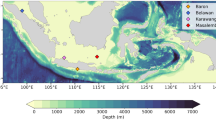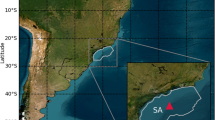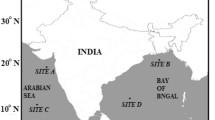Abstract
To explore new operational forecasting methods of waves, a forecasting model for wave heights at three stations in the Bohai Sea has been developed. This model is based on long short-term memory (LSTM) neural network with sea surface wind and wave heights as training samples. The prediction performance of the model is evaluated, and the error analysis shows that when using the same set of numerically predicted sea surface wind as input, the prediction error produced by the proposed LSTM model at Sta. N01 is 20%, 18% and 23% lower than the conventional numerical wave models in terms of the total root mean square error (RMSE), scatter index (SI) and mean absolute error (MAE), respectively. Particularly, for significant wave height in the range of 3–5 m, the prediction accuracy of the LSTM model is improved the most remarkably, with RMSE, SI and MAE all decreasing by 24%. It is also evident that the numbers of hidden neurons, the numbers of buoys used and the time length of training samples all have impact on the prediction accuracy. However, the prediction does not necessary improve with the increase of number of hidden neurons or number of buoys used. The experiment trained by data with the longest time length is found to perform the best overall compared to other experiments with a shorter time length for training. Overall, long short-term memory neural network was proved to be a very promising method for future development and applications in wave forecasting.
Similar content being viewed by others
References
Booij N, Ris R C, Holthuijsen L H. 1999. A third-generation wave model for coastal regions: 1. Model description and validation. Journal of Geophysical Research: Oceans, 104(C4): 7649–7666, doi: https://doi.org/10.1029/98JC02622
Chaudhari S, Balasubramanian R, Gangopadhyay A. 2008. Upwelling detection in AVHRR sea surface temperature (SST) images using neural-network framework. In: Proceedings of IGARSS 2008–2008 IEEE International Geoscience and Remote Sensing Symposium. Boston, MA, USA: IEEE
Deshmukh A N, Deo M C, Bhaskaran P K, et al. 2016. Neural-network-based data assimilation to improve numerical ocean wave forecast. IEEE Journal of Oceanic Engineering, 41(4): 944–953, doi: https://doi.org/10.1109/JOE.2016.2521222
Duan Wenyang, Huang Limin, Han Yang, et al. 2016. A hybrid EMDAR model for nonlinear and non-stationary wave forecasting. Journal of Zhejiang University-Science A, 17(2): 115–129, doi: https://doi.org/10.1631/jzus.A1500164
Filippo A, Torres Jr A R, Kjerfve B, et al. 2012. Application of artificial neural network (ANN) to improve forecasting of sea level, Ocean & Coastal Management, 55: 101–110, doi: https://doi.org/10.1016/j.ocecoaman.2011.09.007
Gao Song, Zhao Peng, Pan Bin, et al. 2018. A nowcasting model for the prediction of typhoon tracks based on a long short term memory neural network. Acta Oceanologica Sinica, 37(5): 8–12, doi: https://doi.org/10.1007/s13131-018-1219-z
Hasselmann K, Barnett T P, Bouws E, et al. 1973. Measurements of wind-wave growth and swell decay during the Joint North Sea Wave Project (JONSWAP). Erganzungsheft zur Deutschen Hydrographischen Zeitschrift Reihe A, 1–95
Hinton G E, Salakhutdinov R R. 2006. Reducing the dimensionality of data with neural networks. Science, 313(5786): 504–507, doi: https://doi.org/10.1126/science.1127647
Hochreiter S, Schmidhuber J. 1997. Long short-term memory. Neural Computation, 9(8): 1735–1780, doi: https://doi.org/10.1162/neco.1997.9.8.1735
James S C, Zhang Yushan, O’Donncha F. 2018. A machine learning framework to forecast wave conditions, Coastal Engineering, 137: 1–10, doi: https://doi.org/10.1016/j.coastaleng.2018.03.004
Jiang Zongli. 2001. Introduction to Artificial Neural Networks (in Chinese). Beijing: Higher Education Press
Kuang Xiaodi, Wang Zhaoyi, Zhang Miaoyin, et al. 2016. An interpretation scheme of numerical near-shore sea-water temperature forecast based on BPNN. Oceanologia et Limnologia Sinica (in Chinese), 47(6): 1107–1115
Kumar N K, Savitha R, Al Mamun A. 2017. Regional ocean wave height prediction using sequential learning neural networks, Ocean Engineering, 129: 605–612, doi: https://doi.org/10.1016/j.oceaneng.2016.10.033
LeCun Y, Bengio Y, Hinton G. 2015. Deep learning. Nature, 521(7553): 436–444, doi: https://doi.org/10.1038/nature14539
Lipton Z C, Berkowitz J, Elkan C. 2015. A critical review of recurrent neural networks for sequence learning. arXiv preprint, arXiv: 1506.00019
Liu Hui, Wang Jing. 2008. Estimation of ocean upper mixed layer depth using artificial neural network. Journal of Tropical Oceanography (in Chinese), 27(3): 9–13
Skamarock W C, Klemp J B, Dudhia J, et al. 2005. A description of the advanced research WRF version 2 (No. NCAR/TN-468+STR). University Corporation for Atmospheric Research. doi: 10.5065/D6DZ069T
Tissot P E, Cox D T, Michaud P. 2001. Neural network forecasting of storm surges along the gulf of Mexico. In: Fourth International Symposium on Ocean Wave Measurement and Analysis. San Francisco, California, United States: American Society of Civil Engineers, 1535–1544, doi: https://doi.org/10.1061/40604(273)155
Vilibic I, Sepic J, Mihanovic H, et al. 2016. Self-organizing maps-based ocean currents forecasting system, Scientific Reports, 6(1): 22924, doi: https://doi.org/10.1038/srep22924
Wu Lingjuan, Gao Song, Liu Aichao, et al. 2015. Operational system of monitoring, forecasting and warning on marine disaster for Shandong Province. Journal of Institute of Disaster Prevention (in Chinese), 17(2): 61–69
Yang Haofan, Chen Y P P. 2019. Hybrid deep learning and empirical mode decomposition model for time series applications, Expert Systems with Applications, 120: 128–138, doi: https://doi.org/10.1016/j.eswa.2018.11.019
Zhang Wenxiao, Gao Guodong, Mu Guangyu. 2006. Study on the model of salinity based on back-propagation artificial neural network. Ocean Technology (in Chinese), 25(4): 39–41
Zhang Dan, Peng Xiangang, Pan Keda, et al. 2019. A novel wind speed forecasting based on hybrid decomposition and online sequential outlier robust extreme learning machine, Energy Conversion and Management, 180: 338–357, doi: https://doi.org/10.1016/j.enconman.2018.10.089
Author information
Authors and Affiliations
Corresponding author
Additional information
Foundation item: The National Key R&D Program of China under contract No. 2016YFC1402103.
Rights and permissions
About this article
Cite this article
Gao, S., Huang, J., Li, Y. et al. A forecasting model for wave heights based on a long short-term memory neural network. Acta Oceanol. Sin. 40, 62–69 (2021). https://doi.org/10.1007/s13131-020-1680-3
Received:
Accepted:
Published:
Issue Date:
DOI: https://doi.org/10.1007/s13131-020-1680-3




